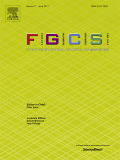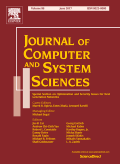Intrusion detection systems (IDSs) are essential elements when it comes to the protection of an ICT infrastructure. Misuse IDSs a stable method that can achieve high attack detection rates (ADR), while keeping false alarm rates under acceptable levels. However, misuse IDSs suffer from the lack of agility, as they are unqualified to adapt to new and “unknown” environments. That is, such an IDS puts a security administrator into an intensive engineering task for keeping the IDS up-to-date every time it faces efficiency drops. Considering the extended size of modern networks and the complexity of big network traffic data, the problem exceeds by far the limits of human managing capabilities. In this regard, we propose a novel methodology which combines the benefits of self-taught learning and MAPE-K frameworks to deliver a scalable, self-adaptive and autonomous misuse IDS. Our methodology enables a misuse IDS to sustain a high ADR even if it is imposed to consecutive and drastic environmental changes. Through the utilization of deep-learning based methods, the IDS is able to grasp an attack’s nature based on generalized features reconstructions stemming directly from the unknown environment and its unlabeled data. The experimental results reveal that our methodology can breathe new life into the IDS without the constant need of manually refreshing its training set. We evaluate our proposal under several classification metrics, and we show that it is able to increase the ADR of the IDS up to 73.37% in critical situations where a statically trained IDS is rendered totally ineffective.
Introducing Deep Learning Self-Adaptive Misuse Network Intrusion Detection Systems
Abstract
Related Publications
Co-Authors
This work would not have been possible without the inestimable contribution of:
- Dimitrios Papamartzivanos
- Georgios Kambourakis
Citation
Dimitrios Papamartzivanos, Félix Gómez Mármol, Georgios Kambourakis, «Introducing Deep Learning Self-Adaptive Misuse Network Intrusion Detection Systems«, IEEE Access, vol. 7, no. 1, pp. 13546-13560, 2019
Journal Ranking & Impact Factor
- Journal: IEEE Access
- Category: Computer Science, Information Systems
- Rank: 35/156
- Quartile: Q1
- Impact Factor: 3.745





